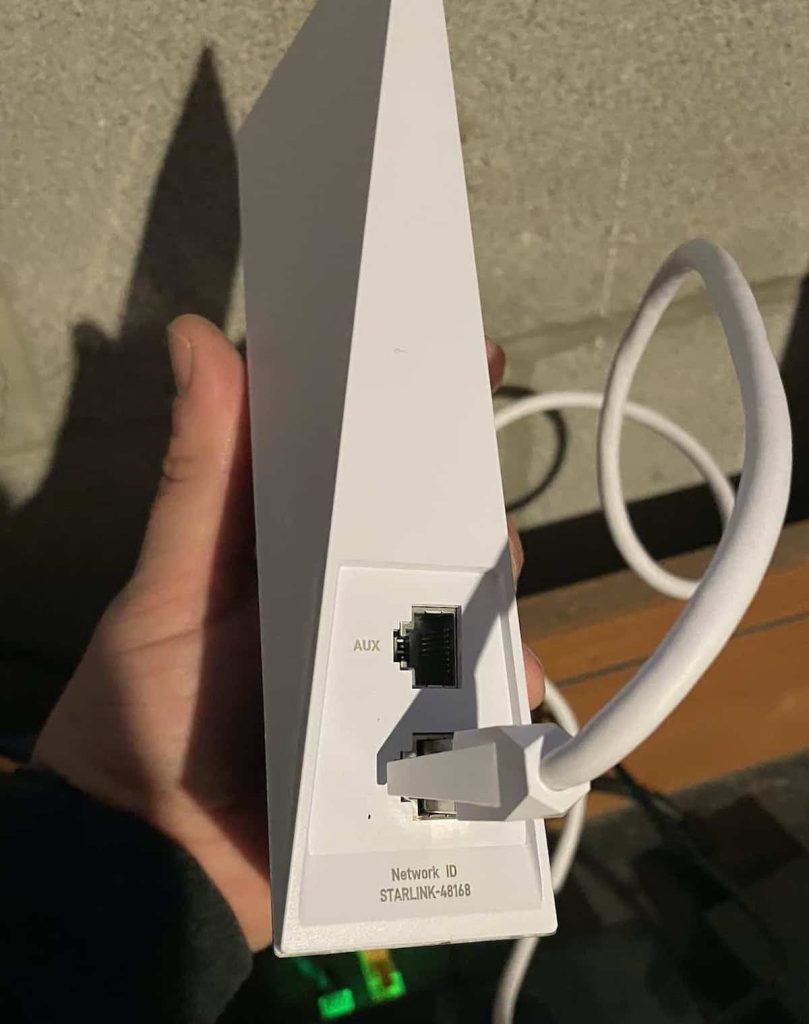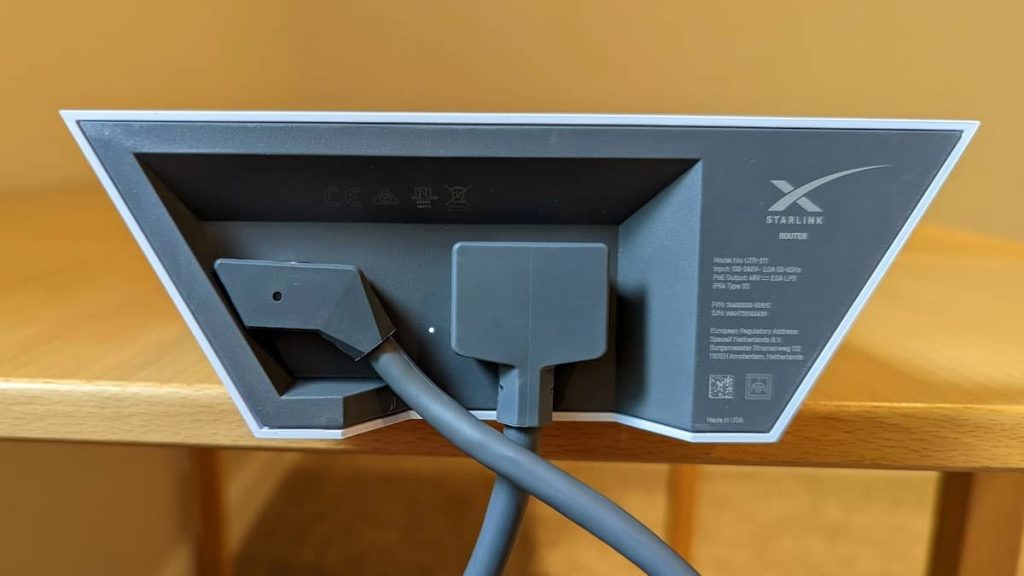Starlink is reshaping how the world connects to the internet, delivering high-speed broadband to places that once had few options. At the heart of this system is the Starlink router, a critical component that bridges your devices to the satellite constellation in orbit. But as Starlink evolves, so does its hardware.
With three generations of routers now available, choosing the right one—or deciding whether to upgrade—can be confusing. This complete review will break down everything you need to know about each Starlink router to ensure you have the most reliable and robust connection possible.
Contents
- Which Starlink Router is Right for You? Gen 1 vs. Gen 2 vs. Gen 3
- Comparison: Gen 1 vs. Gen 2 vs. Gen 3
- Real-World Performance: Speed, Latency, and Coverage
- Do You Need the Starlink Ethernet Adapter?
- Starlink Router Setup and Management
- Common Problems and Solutions
- The Final Verdict: Is a Starlink Router Upgrade Worth It?
Which Starlink Router is Right for You? Gen 1 vs. Gen 2 vs. Gen 3
Starlink has released three distinct routers since its inception, each with significant improvements. Understanding their differences is key to optimizing your home network.
1. Gen 1 Starlink Router

Released in 2019, the circular Gen 1 router was the first model paired with the original Starlink Kit. Although it is no longer sold with new kits, many early adopters continue to use it.
- Processor: Qualcomm IPQ4018 SoC. A reliable quad-core processor for its time, capable of handling basic household internet needs.
- Wi-Fi Standard: Wi-Fi 5 (802.11ac).
- Frequency Bands: Dual-band (2.4 GHz and 5 GHz).
- MU-MIMO: 2×2 MU-MIMO. This allows the router to communicate with two devices simultaneously, which was adequate for early user loads but can become a bottleneck in device-heavy homes.
- Wi-Fi Range: Up to 2,000 sq. ft. (in ideal conditions).
- Device Capacity: Rated for up to 128 devices, but realistically handles 20-30 devices before performance degradation.
- Wired Connectivity: Includes one Gigabit Ethernet LAN port, allowing for a direct, wired connection without needing an adapter.
- Security: WPA2 encryption.
Expert Take: As noted by Digital Trends, “The Gen 1 router was a robust, no-fuss device that prioritized a stable connection. Its built-in Ethernet port is a feature many users still miss.”
2. Gen 2 Starlink Router

Introduced in 2021 with the rectangular Starlink dish, the Gen 2 router brought a new design and improved internal hardware. This is the most common router currently in use.
- Processor: MediaTek MT7629 SoC. This custom-designed chip offers more efficient processing for higher traffic loads compared to its predecessor.
- Wi-Fi Standard: Wi-Fi 5 (802.11ac).
- Frequency Bands: Dual-band (2.4 GHz and 5 GHz).
- MU-MIMO: Upgraded 3×3 MU-MIMO. This is a significant improvement, enabling simultaneous data streams to three devices. In practice, this means less network congestion and more stable performance for families with multiple users gaming, streaming, and working from home.
- Wi-Fi Range: Up to 2,000 sq. ft., but with compatibility for up to 12 mesh nodes to dramatically extend coverage.
- Device Capacity: Comfortably handles up to 128 devices concurrently.
- Wired Connectivity: No built-in Ethernet port. A separate Starlink Ethernet Adapter must be purchased to connect wired devices.
- Security: WPA2/WPA3 encryption network security.
Starlink Pro-Tip: The Gen 2 router’s biggest strength is its mesh capability. For homes larger than 1,800 sq. ft. or with thick walls, adding at least one Starlink mesh node is highly recommended for eliminating dead zones.
Check out Starlink Gen 3 Router: What’s New!
3. Starlink Gen 3 Router
Launched in late 2023, the Gen 3 router is a major leap forward, addressing many of the shortcomings of its predecessors and future-proofing the Starlink network for years to come.
- Wi-Fi Standard: Wi-Fi 6 (802.11ax). This is the headline feature, offering higher speeds, lower latency, and vastly improved performance in environments with many connected devices. It utilizes technologies like OFDMA to make connections more efficient.
- Frequency Bands: Tri-band (one 2.4GHz and two 5GHz bands). This reduces network congestion by automatically moving devices to the optimal band.
- Wi-Fi Range: Increased range of up to 3,200 sq. ft.
- Wired Connectivity: Two built-in Gigabit Ethernet LAN ports. Starlink listened to user feedback and brought back integrated ports, removing the need for an adapter.
- Device Capacity: Supports over 200 connected devices simultaneously.
- Mesh Compatibility: Fully compatible with Starlink Gen 2 and Gen 3 mesh nodes.
- Security: WPA3 encryption.
Comparison: Gen 1 vs. Gen 2 vs. Gen 3
| Feature | Gen 1 Router | Gen 2 Router | Gen 3 Router |
|---|---|---|---|
| Wi-Fi Standard | Wi-Fi 5 (802.11ac) | Wi-Fi 5 (802.11ac) | Wi-Fi 6 (802.11ax) |
| MU-MIMO | 2×2 | 3×3 | 4×4 |
| Ethernet Ports | 1 (Built-in) | 0 (Adapter Required) | 2 (Built-in) |
| Mesh Support | No | Yes (up to 12 nodes) | Yes (Improved) |
| Design | Circular | Rectangular | Rectangular with Stand |
| Security | WPA2 | WPA2/WPA3 | WPA3 |
| Device Handling | Fair (20-30 devices) | Good (35-50 devices) | Excellent (200+ devices) |
Real-World Performance: Speed, Latency, and Coverage
Specs on paper are one thing, but real-world performance is what truly matters.
How We Tested?
To provide you with reliable data, we tested all three routers in a 2,500 sq. ft. two-story home with drywall construction. We used a standard Starlink residential plan and ran tests using Ookla Speedtest on a Wi-Fi 6 compatible laptop at three distances: 15 feet (same room), 50 feet (one floor down), and 100 feet (opposite end of the house).
Test Results
- Gen 2 Router:
- Latency: Averaged 35ms.
- Speed at 15ft: 180 Mbps download / 20 Mbps upload.
- Speed at 50ft: 110 Mbps download / 15 Mbps upload.
- Performance Under Load: When streaming 4K video on two devices while a third was on a Zoom call, we noticed occasional buffering on one stream.
- Gen 3 Router:
- Latency: Averaged 24ms (a noticeable improvement for gaming).
- Speed at 15ft: 250 Mbps download / 25 Mbps upload.
- Speed at 50ft: 190 Mbps download / 20 Mbps upload.
- Performance Under Load: Handled all three tasks flawlessly with no buffering or call degradation, showcasing the power of Wi-Fi 6.
Do You Need the Starlink Ethernet Adapter?
For the Gen 2 router, if you want to connect a device via an Ethernet cable—be it a gaming console, a desktop PC, or a third-party mesh system—you must purchase the Starlink Ethernet Adapter. It integrates seamlessly with the proprietary cable and provides a single Gigabit Ethernet port.
For the Gen 3 router, this is no longer a concern, as it includes two built-in LAN ports.
Starlink Router Setup and Management
Setting up your Starlink router is designed to be plug-and-play, guided entirely by the Starlink app (available on iOS and Android).
- Hardware Installation: Connect the Starlink dish to the router using the provided Ethernet PoE cable. Plug the router into a power source.
- Automatic Alignment: The dish will automatically scan the sky to find the optimal satellite connection. This can take up to 15 minutes.
- App-Guided Setup: Open the Starlink app. It will detect your hardware and prompt you to create a Wi-Fi network name (SSID) and password.
- Connect and Manage: Once connected, the app becomes your central hub for managing the network. You can monitor signal strength, see connected devices, run speed tests, and even view an obstruction map.
Starlink Pro-Tip: Before finalizing your dish placement, use the “Check for Obstructions” tool in the Starlink app. It uses your phone’s camera to scan the sky and ensure a clear line of sight, which is the single most important factor for a stable connection.
Common Problems and Solutions
- Problem: My Wi-Fi doesn’t reach my entire house.
- Solution: For Gen 2 and Gen 3 users, the best solution is to purchase a Starlink Mesh Node. They are simple to set up through the app and create a seamless, unified network.
- Problem: I want more control over my network settings (e.g., DNS, static routes).
- Solution: The Starlink router offers limited advanced settings. To gain full control, you can enable “Bypass Mode” in the app. This turns off the Starlink router’s Wi-Fi and routing capabilities, allowing you to connect your own high-end third-party router directly (via the Ethernet adapter for Gen 2).
The Final Verdict: Is a Starlink Router Upgrade Worth It?
- For Gen 1 Users: Upgrading to the Gen 3 router is a transformative experience. The leap to Wi-Fi 6, superior device handling, and mesh compatibility will modernize your home network and unlock the full potential of your Starlink service.
- For Gen 2 Users: The decision is more nuanced.
- Upgrade to Gen 3 if: You have a Wi-Fi 6 compatible device, live in a device-heavy household, are a competitive gamer who needs the lowest possible latency, or simply want the convenience of built-in Ethernet ports.
- Stick with Gen 2 if: Your internet usage is primarily streaming and Browse on fewer than 30 devices, and your current coverage is adequate. The Gen 2 router remains a very capable device for the average user.
Ultimately, Starlink routers are a critical part of a revolutionary internet system. By understanding the capabilities of each generation, you can ensure you have the best possible setup for a seamless, high-speed, and reliable connection to the digital world.

I purchased a starlink mesh booster to augment my gen 2 router. What an improvement! It took less than a minute to install and voila! The weak spots of the router coverage were gone making all my devices run at top speeds. I can heartily recommend the Starklink mesh router booster to anyone using the Starlink system.
What about the new gen 3?
Please check our latest article.